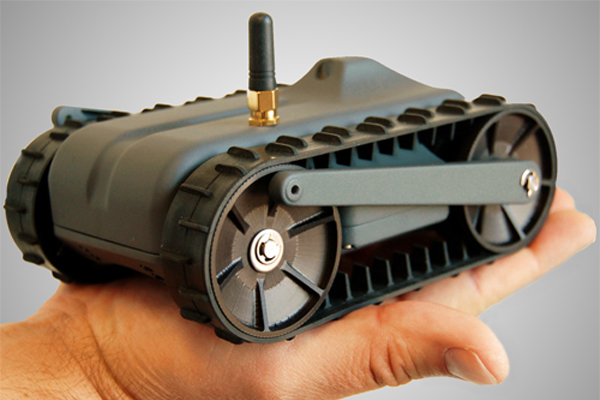Semi-Cooperative Learning in Smart Grid Agents. P. Reddy. PhD Thesis. CMU-ML-13-114 Carnegie Mellon University, December 2013. [bib]
@phdthesis{reddy-phd13,
title = "{Semi-Cooperative Learning in Smart Grid Agents}",
author = {Prashant P. Reddy},
school = {Carnegie Mellon University},
year = {2013}}
Negotiated Learning for Smart Grid Agents: Entity Selection based on Dynamic Partially Observable Features. P. Reddy and M. Veloso. Proceedings of the Twenty-Seventh AAAI Conference on Artificial Intelligence (AAAI-13), Bellevue, July 2013. [bib]
@inproceedings{reddy-aaai13,
title = "{Negotiated Learning for Smart Grid Agents: Entity Selection based on Dynamic Partially Observable Features}",
author = {Prashant P. Reddy and Manuela M. Veloso},
booktitle = {Proceedings of the Twenty-Seventh AAAI Conference on Artificial Intelligence (AAAI-13)},
year = {2013}}
Power TAC: A competitive economic simulation of the smart grid. W. Ketter, J. Collins and P. Reddy. Journal of Energy Economics, 39 (2013) 262-270. [bib]
@article{ketter-ee13,
title = "{Power TAC: A competitive economic simulation of the smart grid}",
author = {Wolfgang Ketter, John E. Collins and Prashant Reddy},
journal = {Energy Economics},
volume = {39},
pages = {262-270},
year = {2013}}
The 2013 Power Trading Agent Competition. W. Ketter, J. Collins, P. Reddy and M. De Weerdt. Erasmus Research Institute of Management Report Series ERS-2013-006-LIS, SSRN 2268852, May 2013. [bib]
@techreport{ketter-ers13,
title = "{The Power Trading Agent Competition}",
author = {Wolfgang Ketter and John Collins and Prashant P. Reddy and Mathijs De Weerdt},
institution = {Erasmus Research Institute of Management, ERS-2011-006-LIS},
number = {SSRN 2268852},
year = {2013}}
Factored Models for Multiscale Decision Making in Smart Grid Customers. P. Reddy and M. Veloso. Proceedings of the Twenty-Sixth AAAI Conference on Artificial Intelligence (AAAI-12), Toronto, July 2012. [bib]
@inproceedings{reddy-aaai12,
title = "{Factored Models for Multiscale Decision Making in Smart Grid Customers}",
author = {Prashant P. Reddy and Manuela M. Veloso},
booktitle = {Proceedings of the Twenty-Sixth AAAI Conference on Artificial Intelligence (AAAI-12)},
year = {2012}}
RSSI-based Physical Layout Classification and Target Tethering in Mobile Ad-hoc Networks. P. Reddy and M. Veloso. Proceedings of the IEEE International Conference on Intelligent Robots and Systems (IROS-11), San Francisco, September 2011. [bib]
@inproceedings{reddy-iros11,
title = "{RSSI-based Physical Layout Classification and Target Tethering in Mobile Ad-hoc Networks}",
author = {Prashant P. Reddy and Manuela M. Veloso},
booktitle = {Proceedings of the IEEE/RSJ International Conference on Intelligent Robots
and Systems (IROS-11)},
year = {2011}}
Learned Behaviors of Multiple Autonomous Agents in Smart Grid Markets. P. Reddy and M. Veloso. Proceedings of the Twenty-Fifth AAAI Conference on Artificial Intelligence (AAAI-11), San Francisco, August 2011. [bib]
@inproceedings{reddy-aaai11,
title = "{Learned Behaviors of Multiple Autonomous Agents in Smart Grid Markets}",
author = {Prashant P. Reddy and Manuela M. Veloso},
booktitle = {Proceedings of the Twenty-Fifth AAAI Conference on Artificial Intelligence (AAAI-11)},
year = {2011}}
Strategy Learning for Autonomous Agents in Smart Grid Markets. P. Reddy and M. Veloso. Proceedings of the Twenty-Second International Joint Conference on Artificial Intelligence (IJCAI-11), Barcelona, July 2011. [bib]
@inproceedings{reddy-ijcai11,
title = "{Strategy Learning for Autonomous Agents in Smart Grid Markets}",
author = {Prashant P. Reddy and Manuela M. Veloso},
booktitle = {Proceedings of the Twenty-Second International Joint Conference on
Artificial Intelligence (IJCAI-11)},
year = {2011}}
The Power Trading Agent Competition. W. Ketter, J. Collins, P. Reddy, C. Flath and M. De Weerdt. Erasmus Research Institute of Management Report Series ERS-2011-027-LIS, SSRN 1975237, May-December 2011. [bib]
@techreport{ketter-ers11,
title = "{The Power Trading Agent Competition}",
author = {Wolfgang Ketter and John Collins and Prashant P. Reddy and Christoph M. Flath
and Mathijs De Weerdt},
institution = {Erasmus Research Institute of Management, ERS-2011-027-LIS},
number = {SSRN 1975237},
year = {2011}}


